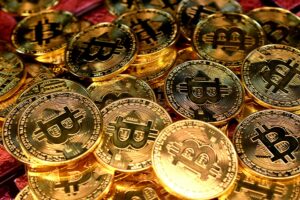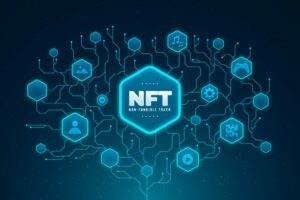
Worldcoin has generated a lot of attention lately, raised a lot of capital, and a lot of eyebrows across various countries and communities.
According to CoinFund’s investment thesis, Worldcoin could onboard more than 1 billion new users to crypto, including a new segment of users from developing countries with poor access to finance. All of this sounds good on paper.
On the other hand, there have been some serious concerns regarding Worldcoin’s exorbitant collection of biometric data, questions regarding their business plan, and what the project is actually good for. In this post, I will offer my take on the many concerns.
Background
The Worldcoin team is on a highly ambitious and – from the sound of it – noble mission to build a global identity network to prove “humanness” in the age of AI and disburse universal basic income (UBI) to people in the form of Worldcoin Tokens (WLD).
The controversial Silicone Valley-based project launched on July 24, two months after a successful Series C funding round in which the developing company, Tools for Humanity, raised $115 million.
In March 2022, Worldcoin raised $100 million at a $3 billion valuation, and in October 2021, $25 million at a $1 billion valuation.
Worldcoin has been funded by some of the most prominent investment funds in the blockchain/crypto industry including a16z, Coinbase Ventures, Digital Currency Group, and Blockchain Capital.
Worldcoin was co-founded by OpenAI’s CEO, Sam Altman, which assumably lends the project some extra credibility and bargaining power in the world of VCs. On the other hand, curiously enough, OpenAI’s ChatGPT is causing the very problems that Worldcoin is aiming to solve:
- We can no longer rely on text-based conversations to assess whether a user is a human or a bot, and
- Generative AI is taking over jobs, so there is an increasing need to distribute UBI.
If we view it pessimistically, Altman’s bet on Worldcoin is a hedge against all the damage OpenAI is causing to society with its products. The equivalent would be if McDonald’s sold diabetes medicine, or if Red Bull sold sleeping pills via a subsidiary.
Worldcoin’s Product
Worldcoin’s main product is the World ID, a sort of digital passport or a Self-Sovereign Identity (SSI) that enables users to verify that they are indeed unique human beings – not bots – without revealing anything further.
The World ID is accessed through the World App which also contains a crypto wallet to store WLD tokens. User privacy is ensured with a cryptographic method called zero-knowledge proof.
Using a crypto-based identity network to distribute UBI is not a novel idea but has already been conceived of and executed by niche crypto projects like Proof of Humanity or BrightID among a handful of others. In the Proof of Humanity system, users are verified by uploading a video of themselves and paying a deposit in ETH.
Hereafter, at least one existing user has to vouch that they are real. Verification on BrightID is achieved at a “verification party”, a daily online meet-up where a group of users verify each other.
As most of my readers probably know by now, Worldcoin stands apart from every other “proof of personhood”-system by verifying new users with an iris-scans at one of the peculiar-looking metallic devices called “orbs”.
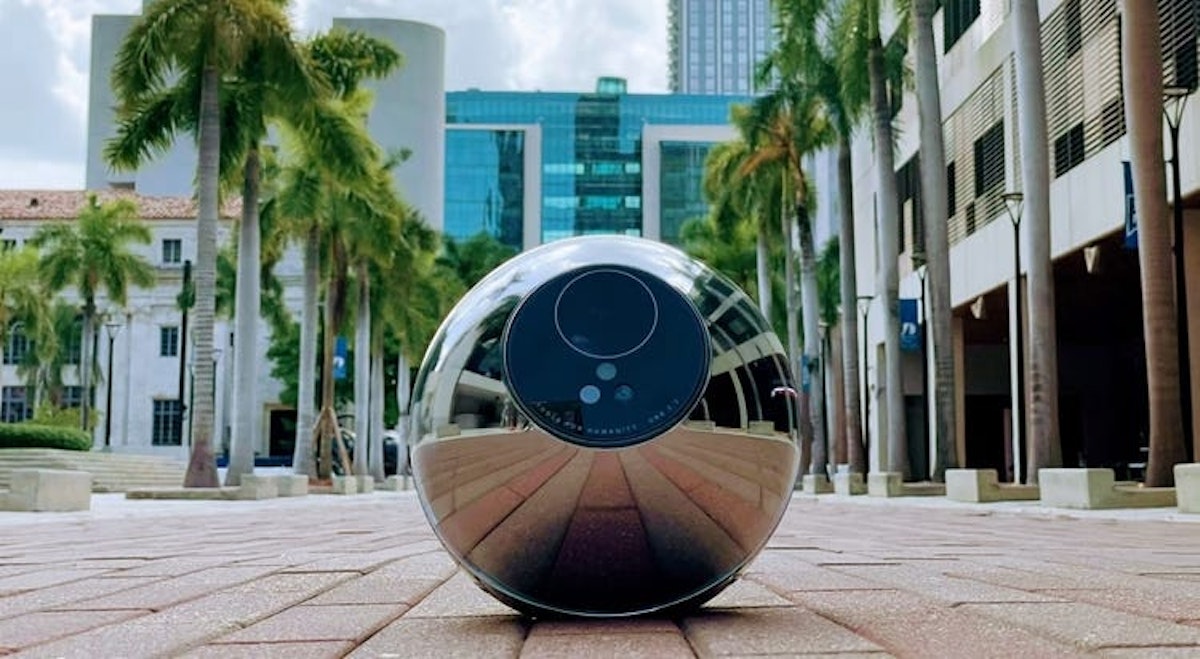
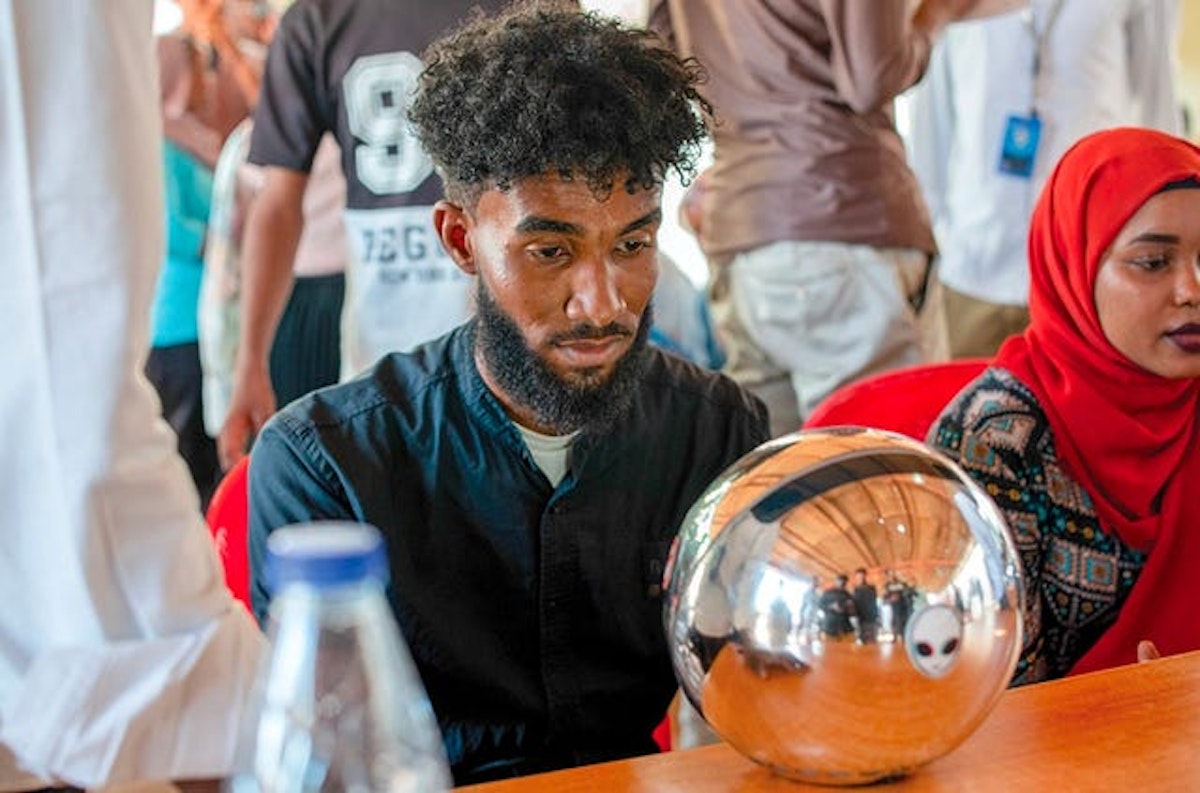
A dedicated section in Worldcoin’s whitepaper, explains in great detail why Worldcoin’s biometric authentication was chosen over other proof of personhood mechanisms, and why iris scans were chosen particularly instead of fingerprints, DNA, or face recognition.
However, Worldcoin’s CEO Alex Blania explained to CoinDesk that orb registration was far from Worldcoin’s preferred method of verification but a necessary evil:
“We really did not want to do this. We know it’s going to be painful. It’s going to be expensive. People think it’s weird. For a number of reasons, we didn’t want to go down that path. But it really was the only solution.”
Ethical Concerns
At the time Worldcoin secured its first big funding round in March 2022, Altman and the team started field-testing orbs in 24 countries, predominantly developing countries.
The promise of free crypto attracted long queues of people in the streets of poorer villages in Indonesia, Kenya, Sudan, India, and Ghana.
Coincidentally or not, MIT Technology Review and BuzzFeed both published investigative articles on April 6 about Worldcoin’s operations in the global south. Many local villagers did not really understand what they were signing up for and why but gladly offered their biometric data scan in exchange for $20 worth of WDL.
Which they, unfortunately, didn’t receive.
The “orb operators” (orb-rators?) were locals, not hired as Worldcoin employees, but as external contractors. They were paid on commission and earned a reward in the stablecoin Tether for each new signup they collected. This reward structure led to some overpromises, deceptions, and at least one unauthorized AirPod giveaway contest.
Overall, it’s not a great look to have for a billion-dollar Silicon Valley company to collect sensitive data from poor villagers in developing countries. Even less, when the villagers were promised a substantial crypto reward measured in their local currency that was not delivered.
Last year, Worldcoin had the outrageous goal of capturing 1 billion new signups by 2023. Perhaps in no small part due to the revelations from MIT Technology and Buzzfeed, the numbers of signups did not skyrocket over the next year as envisioned.
But with the latest funding, Worldcoin is rolling out their operations again with renewed speed and force specifically by installing 1.500 orbs across more than 35 cities. According to Worldcoin’s website, north of 2.2 million people have now scanned their irises to receive WLD.
Coverage from Wired and Rest of World show that early adopters are generally NOT participating in the project because they share the lofty ideals of proving humanness. Unsurprisingly they are in it to collect the sign-up bonus of roughly $50 paid out in the WLD token.
Since the mainnet has now launched, users can finally access their tokens and new signups receive their reward bonuses.
In designated regions, new users also have the ability to claim 1 WLD a week through the World App.
At present, the WLD token is frankly a useless meme coin. However, it can be converted to another asset or paid out in fiat via Binance. There is, of course, also the off chance that WLD could drastically go up in price and become the next PepeCoin or Shiba Inu.
If the stock market is irrational in the short term, we lack an expression to describe what the market for meme coins is.
So far, the WLD token has seen a sharp price decline since its launch on July 24 from $3.3 to $1.6 as of today.
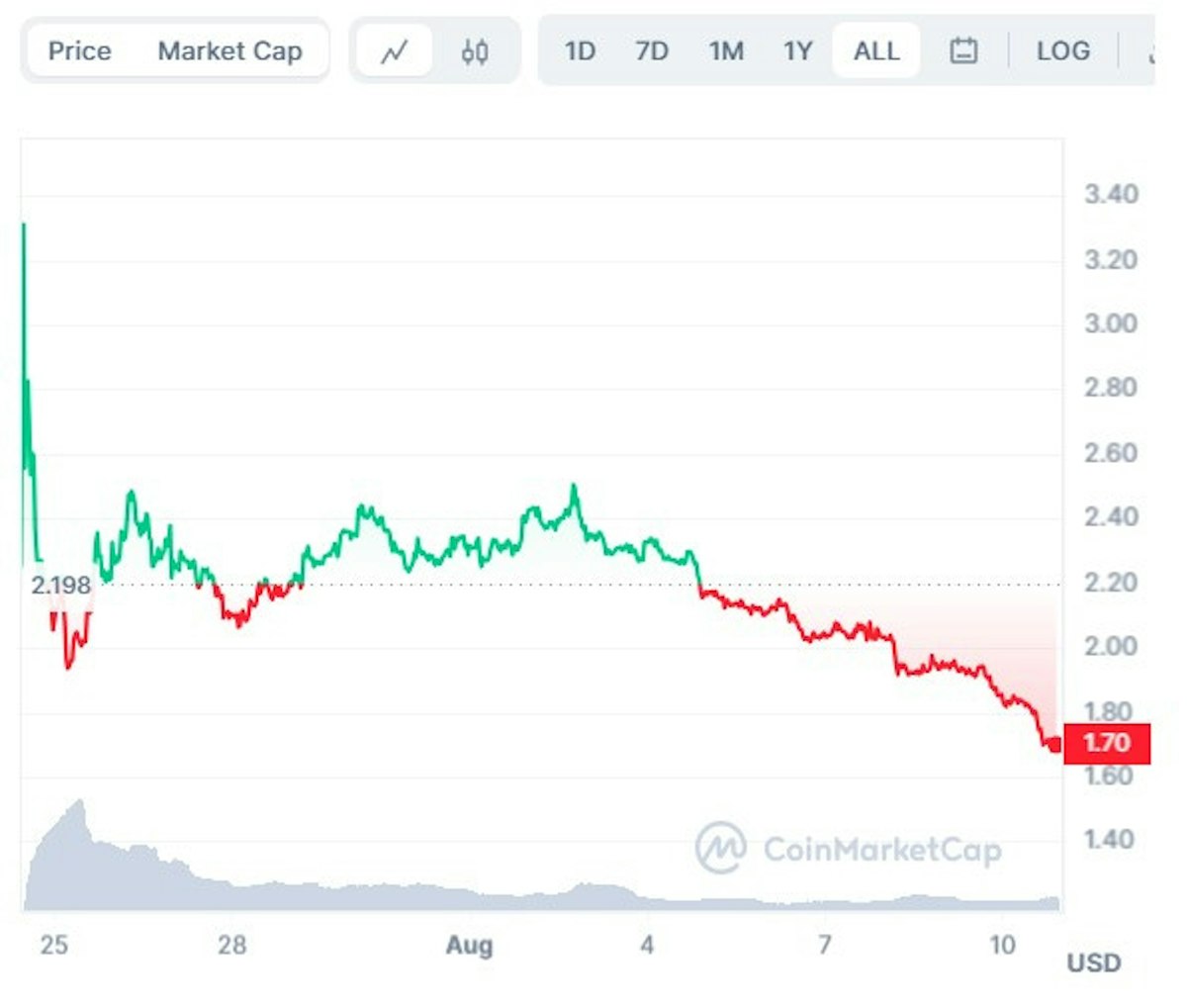
(https://coinmarketcap.com/currencies/worldcoin-org/ (10-08-2023 21:16 CEST)
Privacy & Security
Foreseeably, Worldcoin’s collection of biometric data has led to a few questions from privacy authorities around the world. Kenya was the first country to suspend Worldcoin’s activities while assessing risks to public safety.
Privacy investigations are currently ongoing in France, Germany, and the UK. It would not be surprising if more privacy watchdogs raise the alarm over the next couple of weeks and months.
Worldcoin primarily collects two types of personal data about users: general data such as name, e-mail, and phone number in the World App, and biometric data in connection with the eye-scan registration.
The first category of data is optional to provide according to the Privacy Notice. But without providing at least a phone number or e-mail address, users are unable to send and receive WLD. In itself, this data collection is innocuous.
Another question is if the independent orb operators actually adhere to the policy. For example, several Worldcoin registrants from Nairobi told MIT Technology that orb operators took a photo of their national ID cards as a part of the registration process.
According to Worldcoin’s Biometric Data Consent Form, image data of the user’s irises, eyes, and face is converted into cryptographic code – “IrisCode” – and deleted from the orb after being processed.
As far as I understand, the IrisCode is stored in a central database but cannot be tied to a user’s biometric data or World ID.
Whenever someone uses their World ID to verify their humanness, an algorithm looks for a match in the database of IrisCodes with a cryptographic method known as a zero-knowledge proof.
With this method, the algorithm can confirm if the World ID holder is indeed registered in the database, but without revealing the person’s IrisCode or any further information about them.
Based on these facts, one could argue that the orb registration – although eerily creepy – is not in breach of GDPR. Namely, because the users give consent, all biometric data is deleted from the orb, and the IrisCode cannot be linked to the identity of a person.
The security risks are nonetheless substantial.
If users manage to sign-up several times or sell their World ID to third parties, the whole legitimacy of the system is in limbo.
A few hundred instances have already been reported where Worldcoin users in Cambodia and other African countries sold their World ID to people in China for as little as $30.
Paradoxically, the more WLD tokens increase in price, the more it would incentivize a black market for World IDs.
Even if Worldcoin succeeds on its own terms, by attracting billions of users and if governments adopt World IDs as a common method of verification, the safety hazards would grow to be enormous and unacceptable.
Governments could theoretically misuse the system to assert authoritarian control over citizens by deciding who gets what and when.
All it takes is if World IDs can somehow be linked to people’s real identities, for example, due to a backdoor installed in orb devices – which is very hard to safeguard against.
With all this in mind, Worldcoin’s data collection is arguably unnecessary and inappropriate under GDPR.
Tokenomics
Leaving privacy concerns aside, Worldcoin has some of the defining traits of a classical crypto scam. Big promises, hyper-ambitious goals, and free money for everyone are seldom a recipe for success.
Let’s take a closer look at the Tokenomics-part of Worldcoin’s white paper that specifies how the WLD tokens will be distributed.
There will be capped supply of 10 billion WLD tokens for at least the next 15 years after which the governing body, Worldcoin Foundation, can implement a 1.5% inflation rate if deemed necessary. The allocation of tokens is controlled centrally by the Worldcoin Foundation.
25% of all WLD tokens are earmarked to insiders – investors and developers of Worldcoin. This seems like an awfully high percentage, considering that the project is supposed to be a “financial network owned by everybody.”
Investor and team tokens are locked for one year after launch and then slowly released on a daily basis over the next two years. The remaining 75% of WLD will be distributed to the Worldcoin community in a scheduled time frame of +15 years.
Out of the 10 billion WLD tokens that will ever be in existence, the circulating supply of WLD was capped at 143 million (about 1%) at launch. Of these, 43 million WLD were allocated to “Orb-verified users”, and the remaining 100 million WLD were given in loans to five market makers outside of the US. The loans will expire in three months.
According to experts, the low initial supply of any tokens combined with a large allocation to market makers can lead to an unrealistic valuation. At launch, Worldcoin had a fully diluted market cap of more than $30 billion, yet less than 1% of WLD tokens were in supply (the fully diluted market cap is now less than $20 billion and only 1.25% of the tokens are in supply).
When the five market makers’ three-month loans expire, they no longer have any incentive to hold on to their WLD or artificially pump up the price of WLD by buying the tokens on the open market. Hereafter, WLD’s price stability is uncertain at best.
Jeff Wilser’s coverage of Worldcoin for Coindesk includes a quote from Sam Altman when he was asked who is paying for the Worldcoin token:
“The hope is that as people want to buy this token, because they believe this is the future, there will be inflows into this economy. New token-buyers is how it gets paid for, effectively.”
Is it just me, or does this pretty much fit the textbook definition of a pyramid scheme? Overall, when looking past Sam Altman’s name brand, the headline-grabbing orb devices, and all the hype, I fail to see how Worldcoin has any real-world application besides paying old investors with new investors’ money.
Conclusion
This became a long review. Overall, the intentions behind Worldcoin are arguably noble, but I think the weighty concerns I highlighted here are unsurmountable. If you have made it this far, let me know what you think.
This article was originally published by Futuristic Lawyer on Hackernoon.

